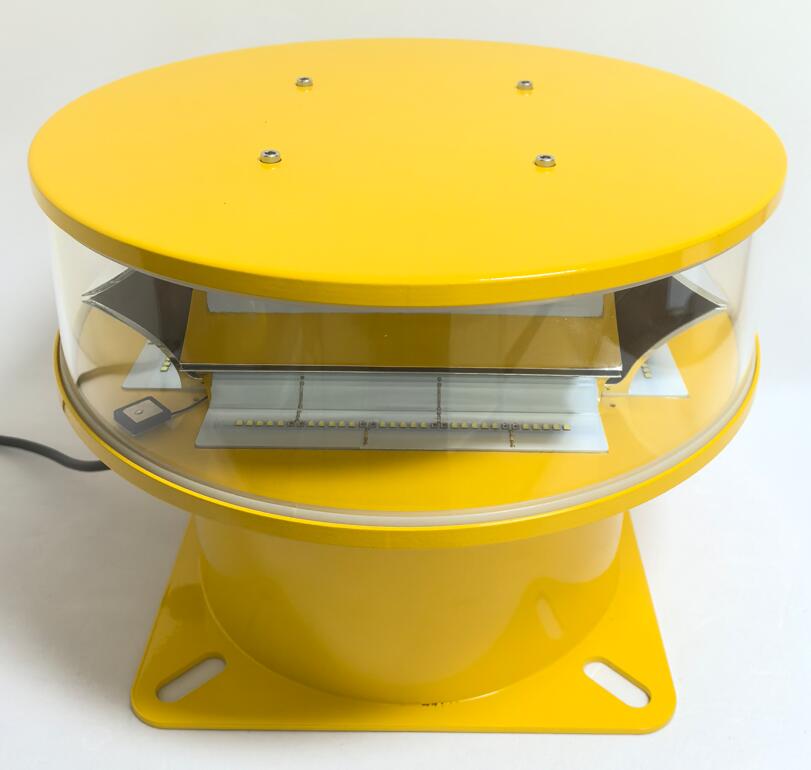
In the world of aviation, safety remains a paramount priority. Among the critical technologies that support this endeavor is the aviation obstruction lamp. These specialized lights are not merely fixtures but are essential tools for ensuring the visibility of tall structures to aircraft, particularly in low-visibility conditions. Their importance lies in their ability to avert potential hazards and ensure smooth air navigation.
What is an Aviation Obstruction Lamp?
An aviation obstruction lamp is a lighting device specifically designed to mark tall structures such as towers, buildings, wind turbines, and chimneys. These lamps emit steady or flashing lights, usually red or white, to alert pilots of obstacles that may impede their flight path. Their robust design ensures continuous performance in extreme weather conditions, fulfilling both safety and regulatory requirements.
Why are Aviation Obstruction Lamps Essential?
The primary function of aviation obstruction lamps is to provide visual cues to aircraft operators, helping them identify and avoid obstacles. With the proliferation of high-rise buildings, communication towers, and renewable energy installations, the airspace is becoming increasingly congested. This makes the role of obstruction lamps more crucial than ever.

Additionally, regulatory bodies such as the International Civil Aviation Organization (ICAO) and the Federal Aviation Administration (FAA) mandate the installation of aviation obstruction lamps on structures exceeding specific heights. Non-compliance with these regulations can lead to safety hazards and legal consequences.
|
aviation obstruction lamps |
aviation obstruction lamp |
Types of Aviation Obstruction Lamps
Aviation obstruction lamps come in various types, catering to different needs and standards. The classification typically depends on the intensity and light pattern:
Low-Intensity Lamps: These are used for structures with lower heights, emitting steady lights visible up to a few kilometers.
Medium-Intensity Lamps: Suitable for moderately tall structures, these lamps often flash and are used for marking objects like wind turbines.
High-Intensity Lamps: Designed for extremely tall structures, such as broadcasting towers or skyscrapers, they emit highly visible lights that can be seen over long distances.
Advances in Aviation Obstruction Lamp Technology
The aviation obstruction lamp industry has witnessed significant advancements in recent years. Innovations such as LED technology have revolutionized their design, making them more energy-efficient and durable. LEDs consume less power, last longer, and provide consistent brightness, reducing maintenance costs.
Another notable advancement is the incorporation of intelligent control systems. These systems can adjust the brightness of the lamps based on ambient light conditions, ensuring optimal visibility while minimizing light pollution. Furthermore, smart connectivity features allow for remote monitoring and maintenance, enhancing operational efficiency.
Environmental and Energy Considerations
Modern aviation obstruction lamps are designed with sustainability in mind. The adoption of solar-powered options reduces dependence on conventional energy sources, making them ideal for remote locations. Additionally, the use of recyclable materials in their construction aligns with global efforts toward reducing environmental impact.
By addressing energy efficiency and environmental concerns, aviation obstruction lamps not only enhance safety but also contribute to broader sustainability goals.
Challenges in the Implementation of Aviation Obstruction Lamps
Despite their benefits, the installation and maintenance of aviation obstruction lamps pose certain challenges. For instance, in remote or rugged locations, ensuring a consistent power supply can be difficult. Additionally, extreme weather conditions, such as heavy snowfall or strong winds, can impact the performance and longevity of these lamps.
Moreover, the initial cost of advanced aviation obstruction lamps, especially those equipped with smart features, can be high. However, the long-term savings in maintenance and energy costs often offset these initial investments.
Future Trends in Aviation Obstruction Lamp Design
The future of aviation obstruction lamps is poised to align with the broader trends of automation and sustainability. Innovations such as self-healing materials and AI-driven control systems could further enhance their reliability and functionality. Moreover, increased collaboration between regulatory bodies and manufacturers will likely lead to the development of standardized, globally accepted designs.
As urbanization continues to grow and new technologies emerge, the role of aviation obstruction lamps will become even more integral to the safe and efficient management of airspace.
The aviation obstruction lamp is a cornerstone of aviation safety, offering a simple yet effective solution to the complex challenges of modern air navigation. As technology evolves, these lamps continue to adapt, becoming smarter, more efficient, and environmentally friendly.
By combining innovation with compliance, the aviation industry ensures that skies remain safe for all—pilots, passengers, and the general public alike. The aviation obstruction lamp, though often overlooked, serves as a beacon of reliability, guiding the way for safer air travel.